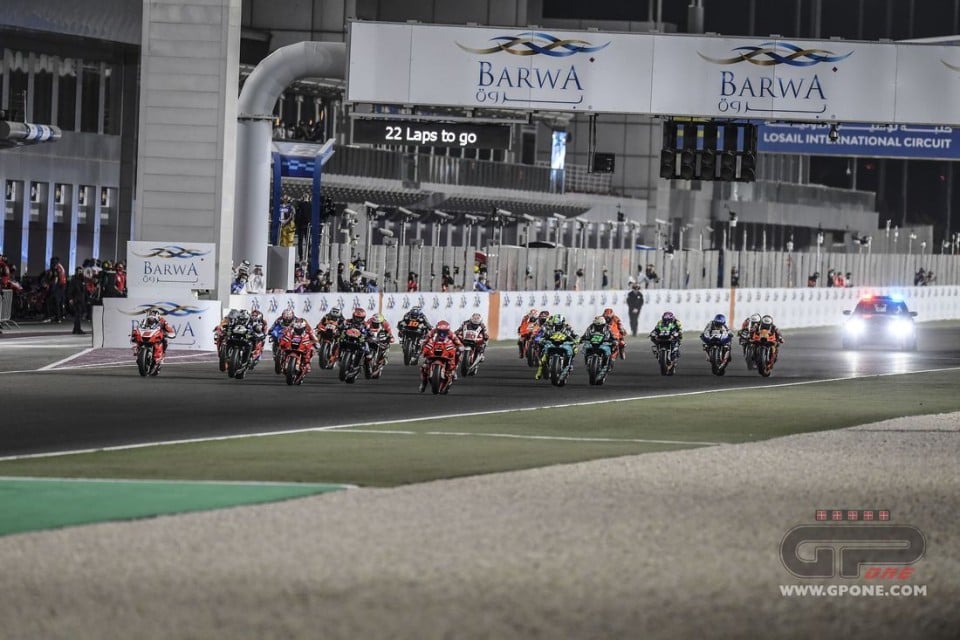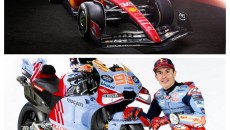Have you ever watched a MotoGP race and seen the bikes whizzing by at incredible speeds? People know these racing bikes for their impressive MotoGP top speeds. They're not only fast - they're engineering marvels. But have you wondered how much one of these speedy bikes costs? Well, they're expensive, and a lot of cool stuff goes into making them so fast. Let's take a closer look at why these MotoGP bikes have such a big price tag.
MotoGP Bike Prices Overview
MotoGP bikes are masterpieces of technology and engineering. Their costs reflect this sophistication. Here's a structured overview with key points highlighted:
Engine Costs: Ranging from €200,000 to €250,000 for a top-class MotoGP bike's engine.
Seasonal Rental for Teams: 2,5/3 million euros for satellite teams factory racing bikes.
Electronics: Exceeding €100,000, with each part costing at least €1,000.
Front Brake Kit: Capped at €70,000, including necessary components, calipers and discs.
Repair Costs: Varying from €15,000 to €500,000 depending on crash severity.

Notable Models:
Honda RC213V: Priced at approximately $2,5 million.
Ducati Desmosedici GP: Around $2/2.5 million.
Yamaha YZR-M1: In the range of $2 to $2.5 million.
Aprilia RS-GP: Priced at approximately $2/2.5 million.
KTM: In the range of $2 to $2.5 million.
Each model's cost is influenced by its design, technology, and materials like carbon and magnesium.

Reasons for High Cost
We'll explore the reasons behind their high cost. Rare parts, the rigors of wear and tear, and the intricacies of their engines make these machines not just fast but extraordinary bikes.
Expensive Materials
MotoGP racing bikes use high-end materials, including titanium, magnesium, and carbon fibre. These materials are light yet strong, essential for the bikes' performance. For example, carbon discs used for brakes boost speed and agility. Carbon in body panels improves speed and agility.

Rare Parts
The suspension radiator, cables and panels are rare and specialized components. Specialized brake discs are rare. Each part, such as the 28 pads in the rear brake system, is tailored for maximum efficiency and performance. This contributes to the high costs.
Exclusivity
Each MotoGP bike, whether a Ducati or Honda, results from extensive research and development in MotoGP racing. This exclusivity adds to the cost of these racing machines. Precision engineering for each component is expensive.
Handcrafted Assembly
Look at the Ducati Desmosedici or Honda RC213V. They are examples of precision handcrafted assembly. Experts assemble each bike. They check that every component, from the engine to the smallest bolt, is perfectly placed. The high-performance standards required in MotoGP racing depend on the manual assembly process.

Wear and Tear
The wear and tear on MotoGP bikes is high due to the extreme conditions they endure. Components like brake pads, tires, and high-performance engines take intense stress during races. The need for replacement of these parts adds to the cost of a MotoGP bike. This is a real problem for top models.
Engine
The engine is the heart of a MotoGP bike, and its construction is a marvel of engineering. Take the engine of a Yamaha YZR-M1. It's designed for high power while maintaining efficiency. The development and manufacturing of these engines involve complex technology and materials. This contributes to the bike's high cost.

MotoGP Betting Tips
For successful MotoGP betting, consider these structured tips:
Research Riders and Teams: Check the current form, past performance, and track records of riders and teams.
Track Characteristics: Different tracks favor different riders and bikes. Know the tracks and their histories.
Weather Conditions: Weather can affect race outcomes. Keep an eye on forecasts.
Qualifying Performance: Analyze how riders perform in qualifying rounds; this often indicates race day performance.
Injuries and Replacements: Stay informed about rider injuries or last-minute team changes.
Update on Rules and Regulations: Be aware of any changes in MotoGP rules that might impact the race.
Betting Strategy: Set a budget, choose the type of bets (winner, podium finish, etc.), and diversify your bets.
Stay Informed: Follow the latest MotoGP news for any developments that could affect the race.
FAQs about MotoGP Bikes
How Much Does a MotoGP Bike Cost?
The Honda RC213V and Ducati Desmosedici GP can range from $1 million to $4 million. This reflects the advanced technology and materials used in their construction.
What Makes MotoGP Bikes So Expensive?
The high cost is due to using expensive materials like carbon and titanium. The handcrafted assembly drives up the price of these bikes. Additionally, state-of-the-art technology contributes to their high cost.
What Are Some Key Technologies in MotoGP Bikes?
MotoGP bikes feature advanced telemetry systems. They have sophisticated aerodynamics and cutting-edge materials. These are for improved









